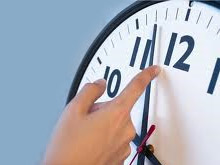Health Topics
-
Healthy Living
-
|
| |
| Golden Hour for Heart Attack Patients |
| Dr Manoj Agarwal |
 |
What is the Golden Hour?
The Golden Hour is a window of opportunity that impacts a patient's survival and quality of life following a heart attack. A heart attack occurs when a narrowing in the arteries and /or a sudden blockage from a blood clot cuts off the nutrients and oxygen supply to the heart muscle. The Golden Hour is a critical time because the heart muscle starts to die within 80-90 minutes after it stops getting blood, and within six hours, almost all the affected parts of the heart could be irreversibly damaged.
|
|
So, the faster normal blood flow is re-established, the lesser would be the damage to the heart.
What can we do in the Golden Hour for a heart attack patient?
To reduce the damage to the heart, it is important to get to the hospital as soon as possible. Other than the consequences of a damaged heart muscle, the most common killer in the early period following a heart attack is an abnormal heart rhythm called ventricular tachycardia and ventricular fibrillation where the heart muscles contract at a rapid rate, but no effective pumping of blood from the heart takes place.
This is why we must ensure that once the person reaches a medical facility (ambulance or hospital), they are immediately put on an ECG monitor to assess the heart rhythm, so they can be given prompt treatment in case of an abnormal rhythm.
How do we recognize a heart attack?
Many times, a person may not realize that he or she is having a heart attack, and quite a few who harbour doubts to that affect, spend a considerable length of time in self denial.
By and large, the warning signs are:
- Chest discomfort
- Discomfort in the arm, neck, or jaw
- Shortness of breath
- Nausea or light headedness
If you think you have one or more of these symptoms, you need to call the emergency services of a nearby hospital, or get somebody to drive you to the hospital.
Do not venture to drive yourself to hospital. Always seek help.
What is the immediate treatment one can expect in a hospital?
Once the patient reaches the hospital, the primary goal of treatment would be to dissolve the obstructing clot, and restore blood supply to the affected part of the heart.
This is done, most commonly, by clot busting drugs. But of late, the preferred modality is mechanical dissolution of the clot by a procedure called as primary angioplasty.
Theonly prerequisite for angioplasty is that it can be done only in hospitals where a cardiac catheterization laboratory and doctors well versed with this procedure are available.
What is angioplasty?
Primary Angioplasty is a procedure that involves inserting a catheter through the blood vessels up to the heart, and identifying the location of the clot, so that it could be dislodged with a balloon and a stent. The blood supply is then re-established to that portion of the heart.
How important is it for angioplasty to be done in the Golden Hour?
The earlier blood supply is re-established, the lesser would be the damage to the heart, and so, lesser the chance of death and of functional disability.
Thus, it is very important to get to an emergency department quickly – within the Golden Hour - if one has reason to suspect that he/she is experiencing a heart attack. |
 |
Dr Manoj Agarwal is Senior Consultant Cardiologist, Apollo Health City, Hyderabad |
|
| |
|